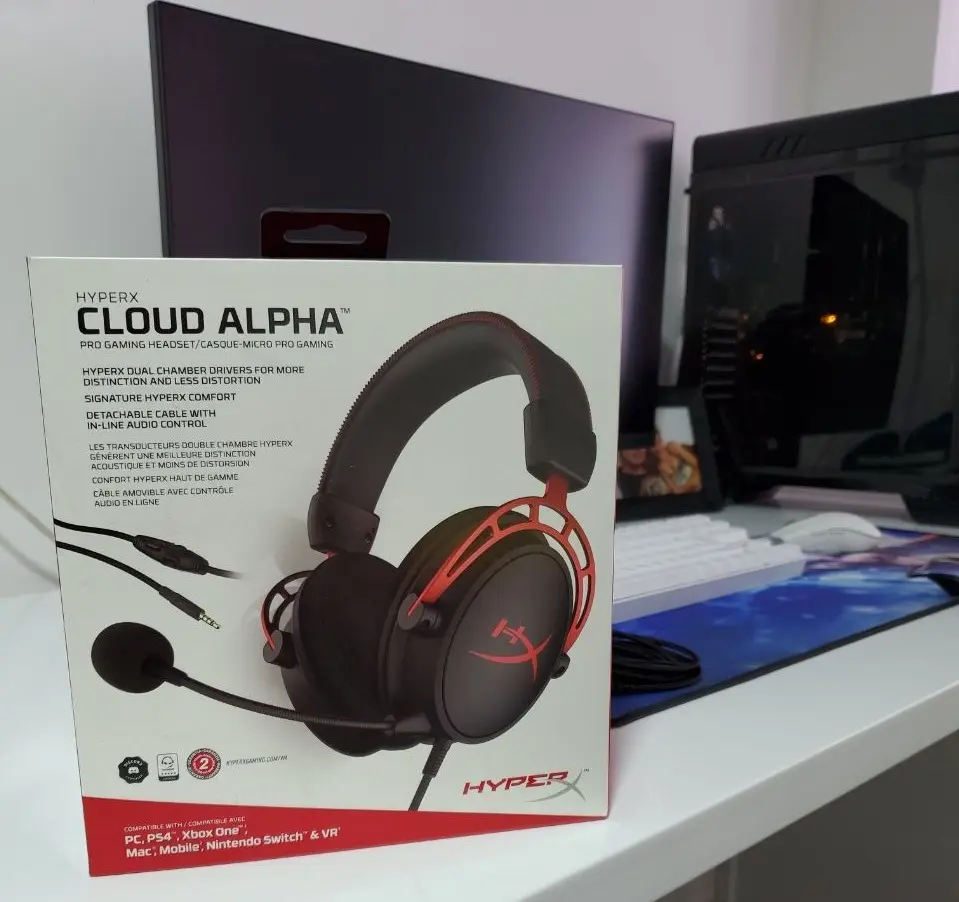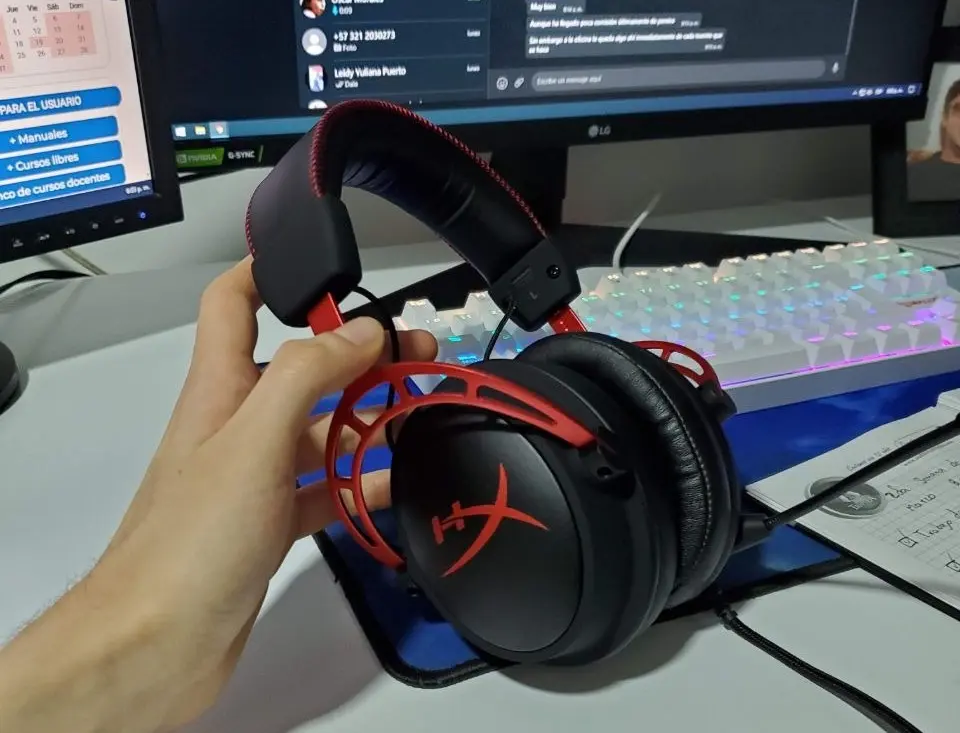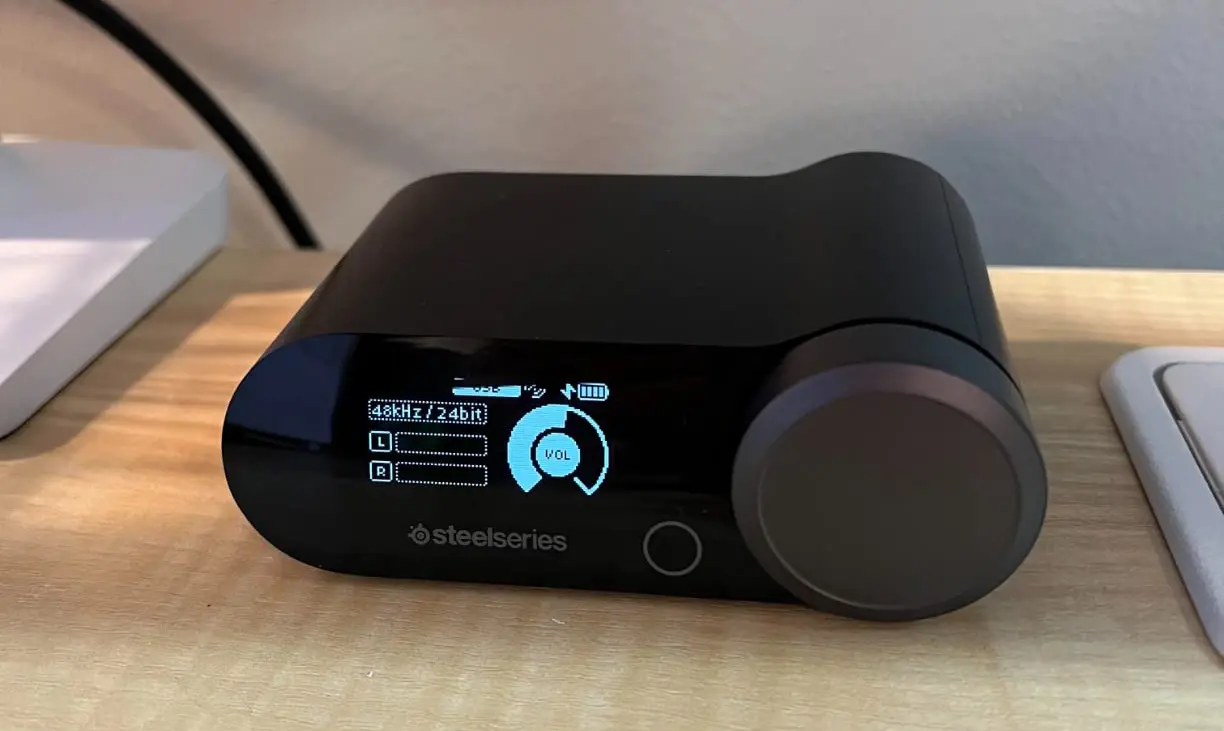I didn’t set out to spend the last three weeks swapping back and forth between wired and wireless gaming headsets, but one test led to another and suddenly I’d logged more late-night hours in Valorant, DaVinci, and Destiny than I care to admit. If you’re weighing up a wired gaming headset against a wireless one, there’s a lot of theory floating around, but using them day in, day out tells a clearer story.
This piece isn’t here to sell you on a brand or push a hype narrative. It’s the straightforward take: how wired and wireless gaming headsets actually feel, sound, and function over long sessions, from real use in gaming and editing, not just specs on a box.
Unboxing and First Impressions
Wired gaming headsets usually greet you with simplicity: a coiled or straight 2 m cable attached or detachable, a 3.5 mm jack, maybe a screw-on ¼-inch adapter taped to the plug, and a foldout “quickstart” the size of a coffee coaster. No glossy promo photos, no app download prompts, no firmware updates waiting. The first tactile impression is “this will just work.”

Wireless headsets, like the SteelSeries Arctis Nova Pro Wireless, come with a dongle tucked into foam, sometimes swappable batteries, charging cables, and a small setup card. There’s that brief pairing dance, maybe an app install for EQ or firmware updates. It’s not complicated, but it’s not instant either.
Design and Build
A good gaming headset, wired or wireless, needs to feel solid enough to toss onto your desk without worrying about plastic flex or earcups twisting the wrong way. The HyperX Cloud Alpha’s matte polymer cups and aluminum frame shrug off daily use. Cable strain relief feels sturdy enough to survive rolling over it with a chair a few times, though I wouldn’t test that on purpose.

Wireless sets like the Nova Pro Wireless lean into plush padding and articulated cups that pivot and tilt, letting them hang comfortably around your neck between rounds. The extra weight from batteries is there, but spread well enough that it never felt heavy during a three-hour Destiny 2 raid.
Freedom of Movement and Practical Use
The obvious upside of wireless headsets is the freedom to get up during matchmaking or to grab coffee while still listening to Discord chatter. During a week of late-night Apex and editing sessions, I could stand up, stretch, or pace during loading screens without pulling my laptop or console off the desk.

Wired headsets, in contrast, remind you where your chair’s radius ends. I’ve lost count of how many times I’ve forgotten I’m plugged in and yanked the cable mid-stand, usually with a clatter of cups or a startled “sorry, sorry” over Discord. That said, there’s comfort in the constant readiness no battery beeps, no dongles, no dropouts.
Sound Performance in Gaming
Across 15+ hours in Valorant and CS2, wired headsets consistently delivered crisp footstep separation and clear directional cues without fuss. The Cloud Alpha, plugged into a DAC or directly into a controller, offered tight low-end punch on grenade blasts while keeping enemy steps and reload sounds easy to place in the mix.

Wireless sets like the Nova Pro Wireless closed the gap impressively, with barely perceptible latency thanks to the 2.4GHz connection. During a late-night Destiny 2 session, I tracked enemy supers in PvP without feeling like I was missing micro cues, and the overall sound signature remained clean at medium volumes. If there’s a slight softness in transient edges compared to wired, it’s so minor most players won’t notice.
Latency, Range, and Stability
Wired headsets have the clear edge in latency or more precisely, the lack of it. No matter what game I tested, from the low chaos of a single-player game to the fast flicks in an Aim Lab session, wired delivered immediate response with no drift or sync concerns.
Wireless has come a long way, with dongle-based connections offering usable performance for all but the most timing-sensitive situations like rhythm games or pro-level shooters. Walking across an 8 m room with two walls didn’t drop connection. Stepping onto a balcony did, but that’s beyond normal use.
Comfort Over Sessions
A headset’s comfort isn’t about foam thickness alone but clamp force, weight distribution, and how heat builds under the pads. During three four-hour gaming blocks in a room around 26 °C, I never felt a hot spot on the crown with the Nova Pro Wireless, though the pads warmed up enough that a quick five-minute breather helped. The Cloud Alpha kept cartilage off the driver plate while fully surrounding the ear, avoiding the “lobe squish” cheaper headsets can cause.
Battery vs Dependability
This is where real-world use speaks louder than specs. A wired headset is always ready. It doesn’t care if your day turned into a seven-hour gaming marathon. It won’t beep, die mid-match, or force you to hunt down a charging cable at 1:30 AM.

Wireless headsets require planning, but good ones make it manageable. The Nova Pro’s swappable battery system meant I never missed a match, swapping cells in under 30 seconds. The HyperX Cloud Alpha Wireless, rated at 300 hours, made battery a non-issue for most people, but I still kept a mental note to top off weekly.
Price and Value
Wireless gaming headsets often carry a higher price tag due to batteries, transmitters, and additional tech like ANC. Expect premium wireless models to hover around the $250–$350 mark, while solid wired options like the Cloud II land under $100.
The wired route often gives you cleaner audio and consistency without a premium price. If your budget prioritizes a new GPU or monitor, a wired headset can free up resources without sacrificing quality.
Conclusion
If you want a gaming headset that just works, that you can plug in, forget about, and rely on for consistent audio and zero-latency play, a wired gaming headset remains a dependable choice. It’s ideal for editing, competitive shooters, and extended sessions where simplicity wins.

If you value a cleaner desk and the freedom to move around your space, a wireless gaming headset can genuinely improve comfort and convenience, provided you’re willing to keep an eye on battery levels.
Both can deliver great sound, comfort, and long-session viability. The right pick isn’t about specs alone it’s about how you play, where you play, and what you’re willing to manage to keep your sessions seamless.
Pros and Cons
Wired Gaming Headsets
Pros:
- Consistent, zero-latency audio for competitive play and editing
- No battery or charging to worry about
- Plug-and-play across consoles and PC without setup
- Often more affordable for the same audio quality
Cons:
- Tethered movement can limit comfort
- Cables can snag or clutter your desk
- No wireless freedom to move around your space
Wireless Gaming Headsets
Pros:
- Freedom to move while gaming or taking calls
- Cleaner, cable-free gaming setup
- Modern models offer low-latency, stable connections
- Dual connectivity for gaming and phone calls
Cons:
- Requires battery management and occasional charging
- Higher upfront cost for comparable sound quality
- Potential for minor latency (rare but possible)